Use Your Samsung Phone as a Drawing Tablet for Pc
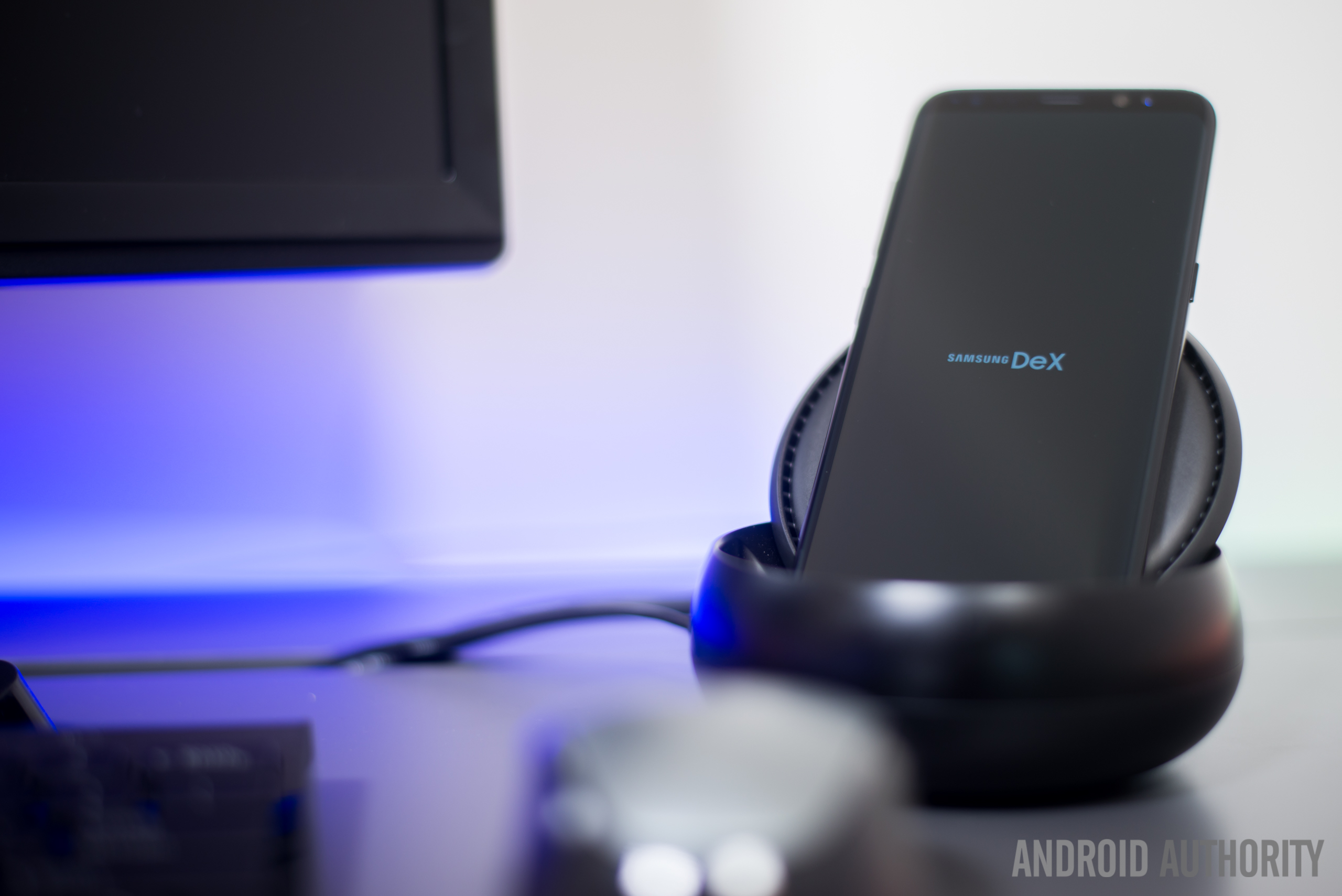
Alongside its new Galaxy S8 and Galaxy S8 Plus smartphones, Samsung also unwrapped a new docking accessory designed to harness the power of the Galaxy S8. Called Samsung DeX, it's meant to allow you to use the Galaxy S8 as a replacement for a fixed desktop computer.
Does it deliver on its promise? Is Samsung DeX the future of smartphones and computing, or is it just another attempt to use smartphones to kill the PC industry? Find out in our Samsung DeX review!
Samsung Galaxy S8 and Galaxy S8 Plus review: Almost to Infinity
Reviews

Samsung DeX isn't new, but it's a new take on an old problem
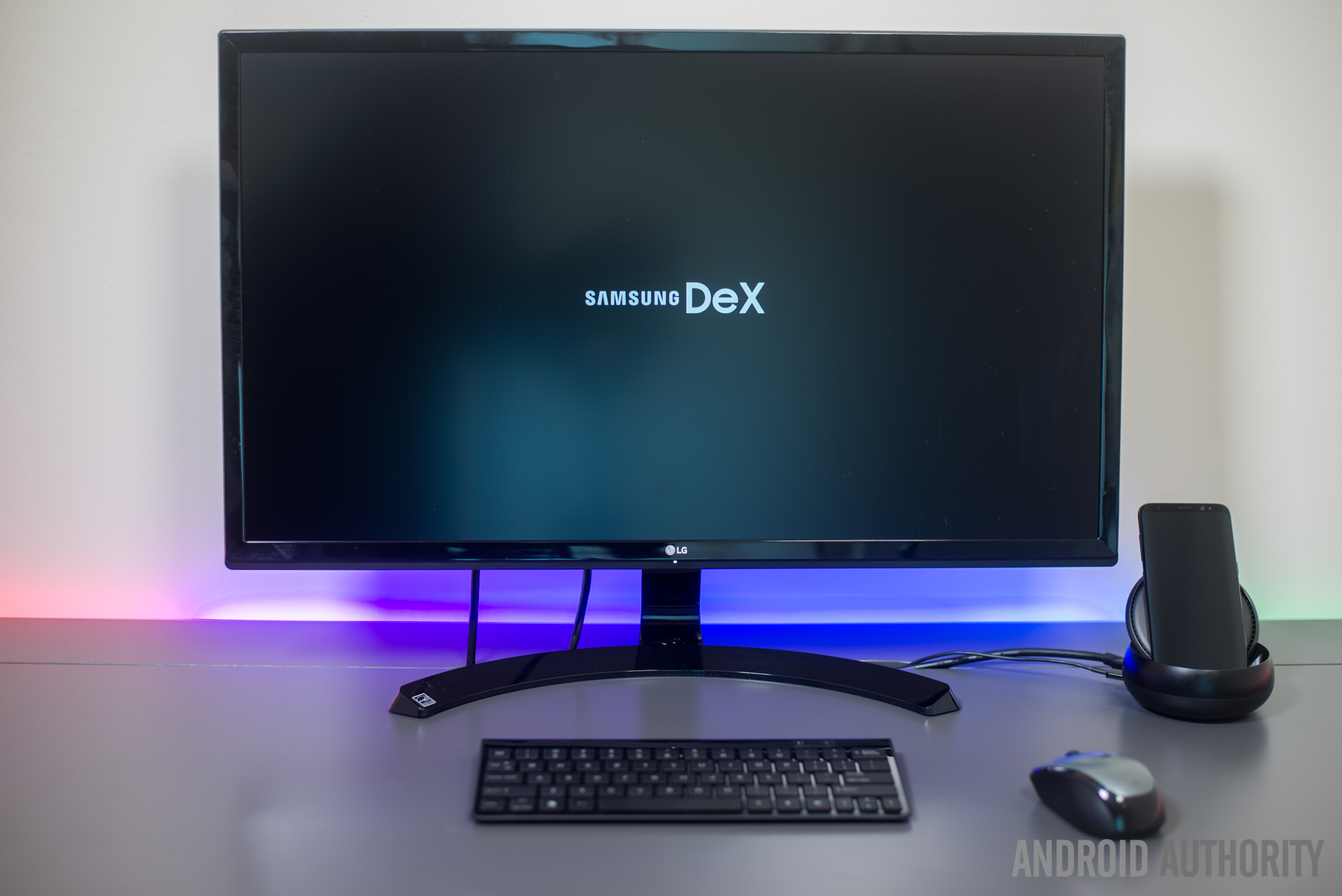
Companies have tried different methods to make the smartphone a viable PC replacement for years
For years, companies have tried different methods to make the smartphone a viable PC replacement. In 2011, the Motorola Lapdock was the first dock to do this, and provided connections for physical keyboards, a mouse, and other peripherals. Apple then tried to use AirPlay to accomplish something similar, although it acted like little more than screen sharing. Then there was HP's Elite X3, which ended up coming close with its Desk Dock before also failing to be widely adopted.
The biggest challenge plaguing these solutions were that they all tried to mirror the smartphone screen to the desktop, Samsung's previous mobile docks for the Galaxy S4 and Note 2 included. Samsung is hoping that the time is ripe for another attempt and in the DeX station, we have an accessory that's mostly well thought out and has some very smart features as well.
The DeX station

DeX works only with the Galaxy S8 and Galaxy S8 Plus, which is a shame as it would have been nice to have support for older Samsung (and other Android) devices as well. That said, the dock comes with an Ethernet port, two USB ports for connecting peripherals such as a keyboard and mouse, and a HDMI port to connect to your desktop monitor.
The top of the DeX station flips down to reveal the USB Type-C port, where you'll plug in your Galaxy S8. This also acts as a fan to cool your Galaxy S8 or Galaxy S8 Plus in DeX mode. Also, thanks to the USB Type-C port, it charges your phone at the same time as powering the DeX experience.
Samsung disables the display on the Galaxy S8 when using DeX, meaning you're reliant on the keyboard and mouse
It's not perfect however, as Samsung disables the display on your Galaxy S8 when using DeX, meaning you're completely reliant on the keyboard and mouse. It would have been nice to be able to use the phone at the same time but this is a trade-off to having the desktop experience.
DeX as a desktop
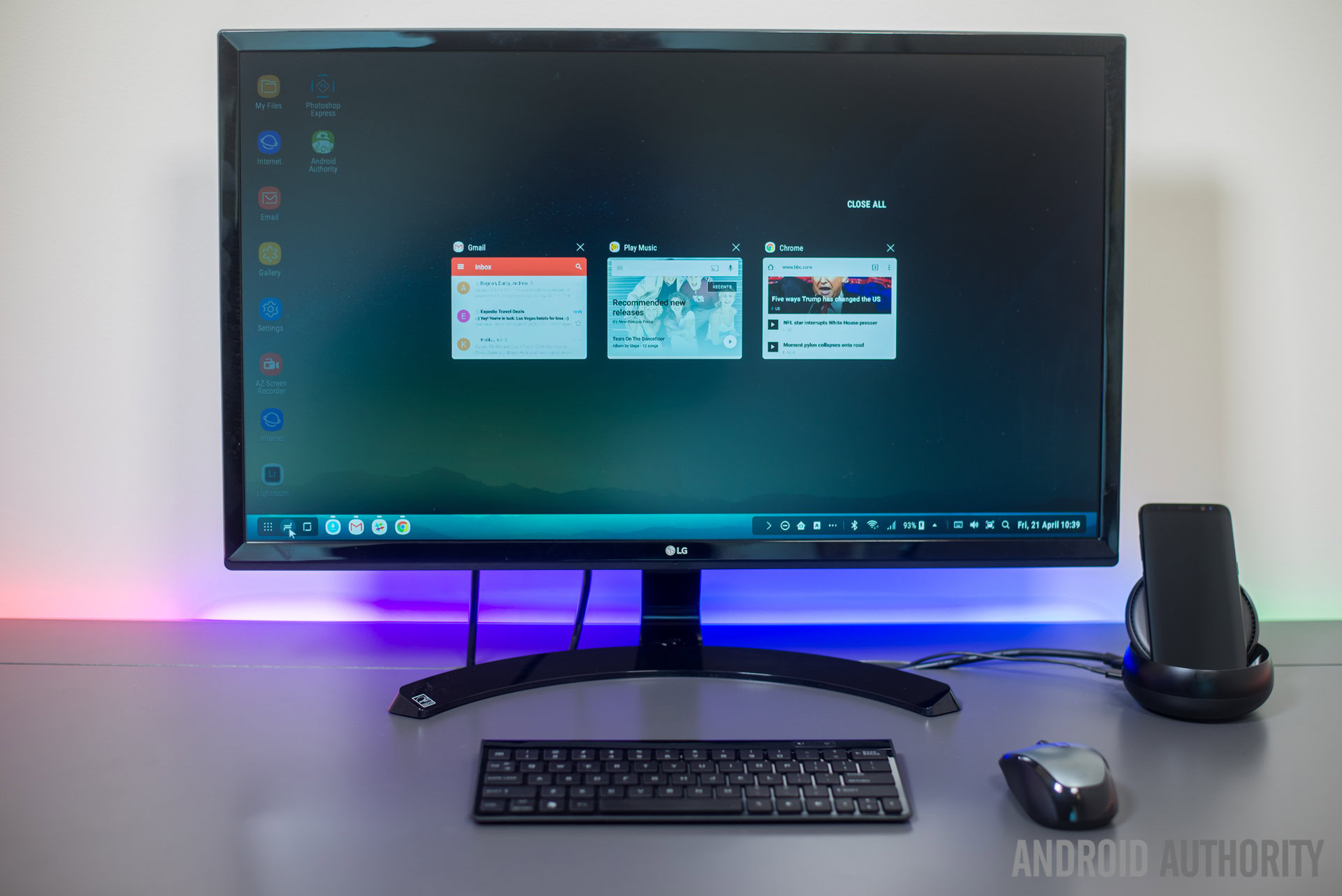
The number of apps compatible with DeX is pretty small, and, short of Microsoft Word, lacking in any depth of quality
Samsung DeX has a lot of potential, but in its current form, it's certainly a little raw. The number of apps compatible with DeX is pretty small, and, short of Microsoft Word, lacking in any depth of quality. At the launch of the Galaxy S8 – where DeX was made official – Samsung confirmed that Adobe would bring Photoshop and Lightroom to DeX, but at the time of writing (a few days before the US release of the Galaxy S8), these apps weren't available to test.
Of course, you can open all the apps that exist on your Android phone but most retain their mobile equivalents. For example, WhatsApp shows up as mobile (which is to be expected), but pressing the enter key doesn't send a message, and there's no keyboard shortcut to do so. This means you have to move the mouse and select the send key every time. Similarly, Google Chrome only displays in mobile mode, and often crashes. If you do want to browse the internet and don't mind using a different browser, Samsung has optimised its own internet browser to offer the full website experience.
The browsing experience is seemingly on-par with Microsoft's Edge browser and Google Chrome, although there is a touch of latency when scrolling as DeX seemingly struggles to support resource-intensive websites. When resizing a window, Samsung's browser does well to resize the content accordingly but to get the full experience (and not a responsive version of the site), you need to go into fullscreen mode before resizing the window down.

Samsung DeX works in a similar way to Microsoft's Universal Windows Platform where the same apps could run in both mobile and desktop depending on whether docked to a PC. DeX takes the same premise but without widespread support for apps, it proves to be a little limited. However, what Samsung does have going for itself is that the Galaxy S8 and S8 Plus are likely to sell in more volume than most, if not all, of the Lumia Windows Phones that Microsoft managed to shift.
The biggest challenge facing Microsoft at the time was persuading developers to adapt their apps to support UMA, or in most cases, even develop their apps for Windows 10 Mobile in the first place. For Samsung, this should be a much easier bridge to cross. Plus, if the additional development resources required to develop for DeX are minimal – either via ease of software or incentives from the company – we will hopefully see developers flock to adapt their apps for Samsung DeX.
In DeX mode, the phone follows the same security settings as when not docked
When moving away from your docked phone, you might be wondering how security works, especially if you only want to move away from it temporarily. The answer is pretty simple: in DeX mode, the phone follows the same security settings as when not docked. So in my case, a press of the power button instantly locks the phone. It then requires you to enter either your password, PIN, pattern, or use biometrics such as iris recognition or fingerprint scanning to unlock the phone.
How to unlock your Samsung Galaxy S8
Features
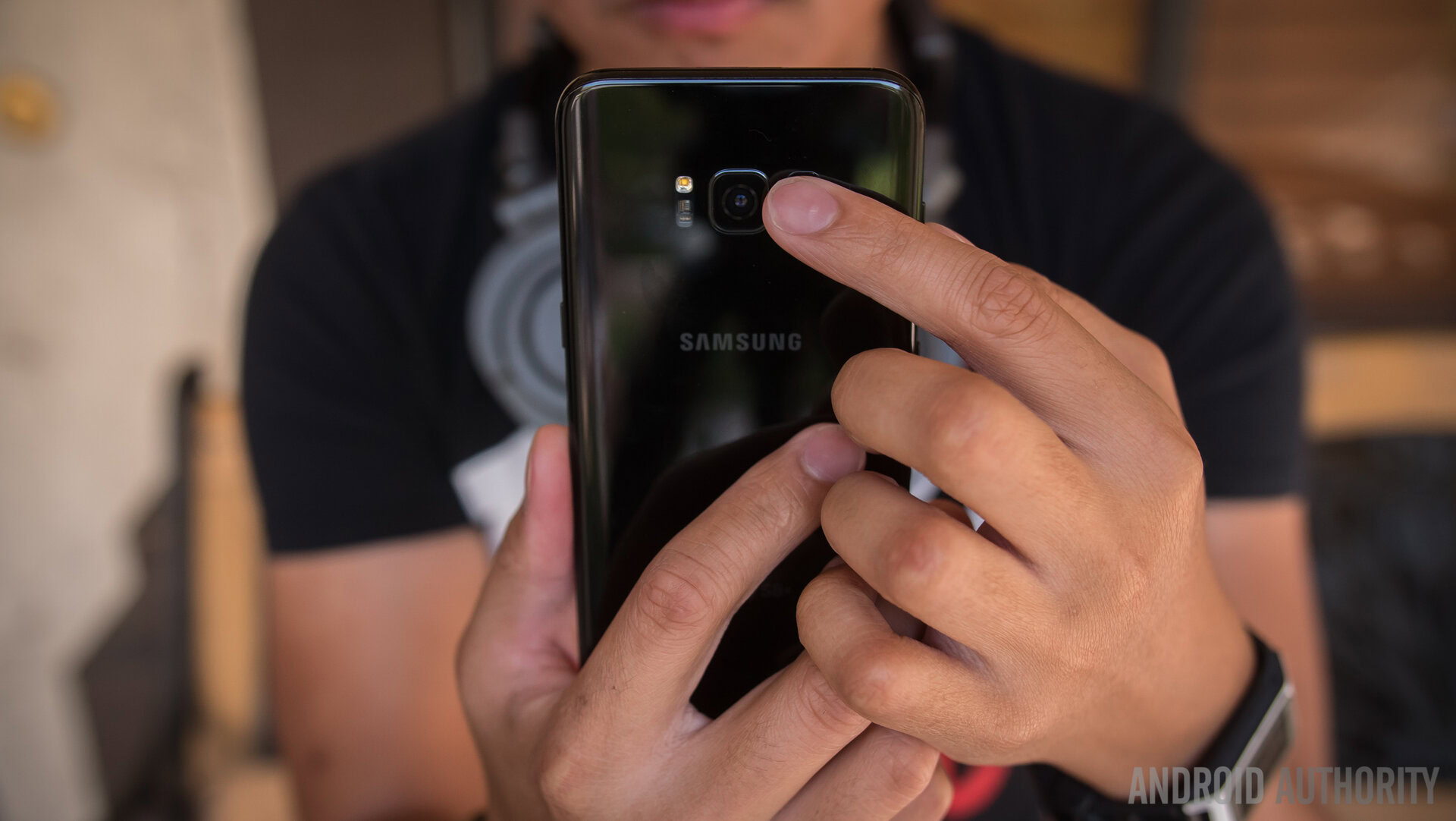
The latter is quite awkward with the fingerprint sensor on the back, making it even more difficult to unlock. When you use iris recognition, though, the DeX dock props the Galaxy S8 up at the right height to make iris scanning a breeze. In fact, in our Galaxy S8 review, I found that the iris recognition can be a little hit and miss. While you still have the same issues in terms of recognising you through glasses, DeX does at least solve the issue with needing to position the phone at a certain angle.

In desktop mode, Samsung DeX offers the same button configuration you'll find on your Galaxy S8 with the apps menu, home and recent apps keys on the bottom left and a taskbar containing notifications, quick shortcuts and other useful tools on the right. In multi-tasking mode, you have the same layout as the Galaxy S8's native multitasking, except horizontally and you can also close apps from the bottom status bar, although you then need to shut them from the multi-tasking menu as well.
Overall, the performance doesn't scream high end PC but rather, reminds me of early netbooks, albeit with a little more power. There's certainly enough grunt under the hood to handle most tasks but once you start running multiple applications and have several windows open at once, there is a noticeable slowdown, although this could also be said of any Android smartphone. The experience of DeX is intrinsically linked to the performance of the Galaxy S8 and if you have noticeable performance issues on your phone – which is only likely to happen after months of usage – these will be even more prevalent when using DeX.
The verdict: should you buy DeX?

Overall, Samsung DeX shows a lot of promise, but without the widespread adoption of apps and optimization of all apps for the desktop experience, it's difficult to determine just how useful it is. In its current state, it doesn't do much better than other solutions out there, but it wouldn't be fair to judge it just on this basis. DeX is unique as it aims to present a solution to a problem that not many users face – namely, being able to be truly mobile and work from anywhere – but for those who need a solution, DeX is certainly one of the most portable out there.
Should you buy DeX? For most users, the answer will be an easy 'no'
Should you buy DeX? For most users, the answer will be an easy 'no' as it doesn't solve a problem they've faced. However, if your job takes you to multiple work places and you need an easy way to dock and undock for light work without carrying an additional computer, then Samsung's DeX could be a potential solution. The biggest challenge to it being truly useful is that your use case has to be very specific – you need the guarantee of a computer monitor you can dock into, as well as a workload that doesn't require Windows/Mac specific applications and isn't resource intensive.
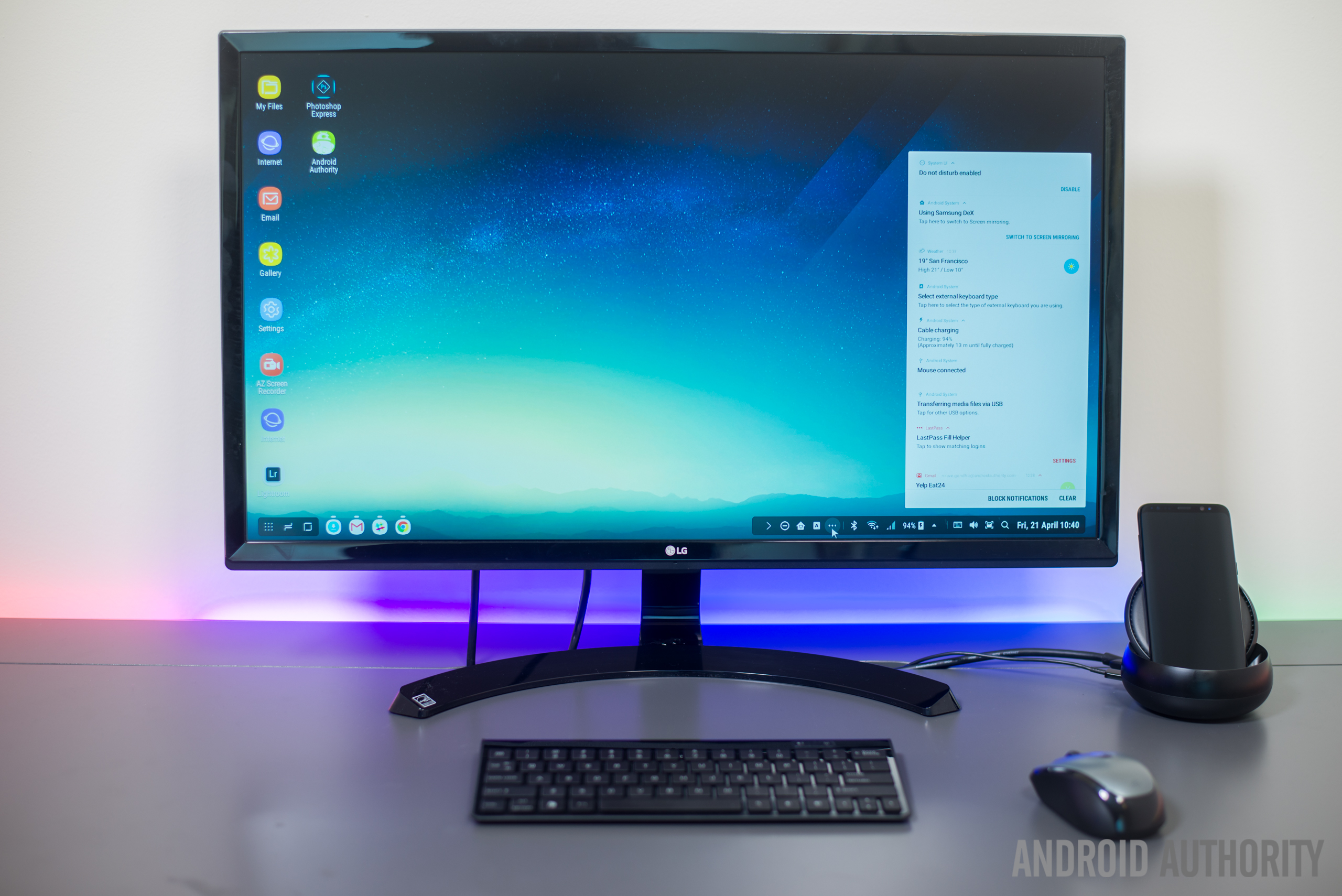
Samsung DeX would be ideal in developing countries for small businesses, but the cost of owning a Galaxy S8, monitor, DeX station and all the peripherals will probably be as expensive, if not more expensive, than an all-integrated desktop computer or powerful laptop and a more affordable smartphone. If Samsung could find a way to make DeX more affordable for developing markets then it would certainly have a place, especially for agriculture industries where business owners are already using their smartphones to do a lot of tasks we associate with traditional computers.
With all of that said, DeX is a rather cool accessory and it's testament to the future of technology that you're able to power a desktop-like experience from a smartphone. It's not perfect, and it remains to be seen whether it'll ever be widely adopted, but it certainly has the potential to be useful. Ultimately, the future of DeX depends on Samsung, and specifically whether it can make it affordable for the users who it would truly benefit and whether it can get developers on board to offer optimized apps.
What do you think of Samsung DeX? Would you buy one? Does it fit your use case or do you think it's a fad that will fail to achieve widespread adoption? Be sure to speak up in the comments below!
Use Your Samsung Phone as a Drawing Tablet for Pc
Source: https://www.androidauthority.com/samsung-dex-review-765027/
0 Response to "Use Your Samsung Phone as a Drawing Tablet for Pc"
Post a Comment